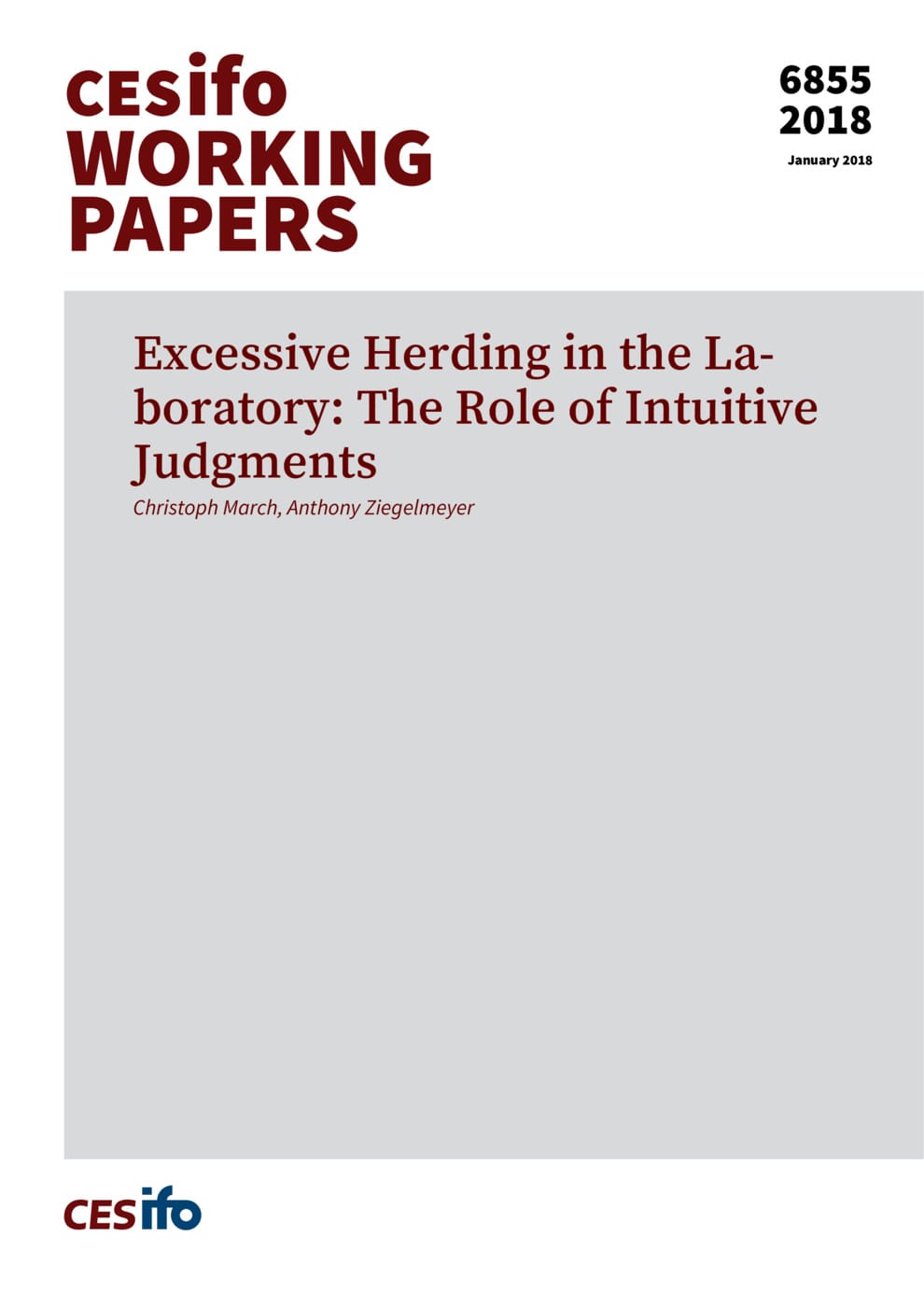Excessive Herding in the Laboratory: The Role of Intuitive Judgments
CESifo, Munich, 2018
CESifo Working Paper No. 6855

We designed four observational learning experiments to identify the key channels that, along with Bayes-rational inferences, drive herd behavior. In Experiment 1, unobserved, whose actions remain private, learn from the public actions made in turn by subjects endowed with private signals of medium quality. We find that when unobserved face a handful of identical actions that contradict their high quality signals they herd more extensively than predicted by Bayes-rational herding. Deviations from the normative solution result in severe expected losses and unobserved would be better off without the chance to learn from others. When unobserved are endowed with medium quality signals they learn rather successfully from public actions, but they overweight their low quality signals relative to public information. Experiments 2-4 reveal that non-Bayesian updating and informational misinferences are the two channels that drive excessive herding, while the strong (resp. mild) overemphasis on low (resp. medium) quality signals is caused by wrong expectations about others’ strategy. A model of intuitive observational learning accounts for the phenomenon of excessive herding, it captures well herd behavior with medium quality signals, but it fails to predict that the reluctance to contradict private signals is stronger for low than for medium quality.
Behavioural Economics
Empirical and Theoretical Methods